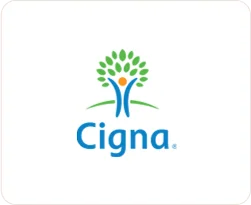You can beat crystal meth addiction—we’ll show you how. Take control—get treatment now.
Crystal meth addiction refers to the compulsive use of methamphetamine, a powerful central nervous system stimulant. The powder substance exists irregularly in crystal form, but its brain-altering chemicals trigger powerful feelings of pleasure. People use crystal meth because it provides them stimulation as well as a way to escape their emotional problems.
Drugs Rehab FL presents thorough information regarding crystal meth drug addiction that covers drug use signs along with risk elements and various methods of meth addiction treatment. Getting professional assistance with meth addiction awareness holds essential value for all meth addicts or persons requiring help.


Crystal meth is highly addictive because it generates powerful neurological impacts. Dopamine releases into the brain because of crystal meth consumption and this neurotransmitter causes pleasure feelings and rewards. The sudden dopamine surge produces an intense state of euphoria that people normally seek repeatedly. After their first experience with crystal meth users develop a cycle of addiction which leads them toward repeated drug use. The body starts demanding the drug because it seeks the feelings of euphoria that the medicine initially produced. Use of the substance develops quickly, which causes users to consume increasing doses as time progresses. The symptoms of withdrawal become especially serious during attempts at detoxification.
People battling crystal meth addiction deals with fatigue, depression and severe cravings that significantly complicate their withdrawal efforts from the drug. The profound brain-altering effects of crystal meth prove why numerous affected individuals cannot break free from its hold. Different users might experience varying effects from crystal meth yet the substance holds high addiction possibilities for every population group.
Several factors contribute to meth’s high addiction potential:
Through its entrance into the brain, the drug Meth produces excessive amounts of dopamine which creates intense craving for additional use.
Brain chemical changes caused by meth addiction make it essential for users to receive professional medical assistance during withdrawal period.
Users require greater doses to reach a comparable high state, which endorses the development of addiction.
Users engage in repeated meth consumption to avoid withdrawal symptoms which mainly cause fatigue and depression after their last use.
Contact Drugs Rehab FL now to explore meth addiction treatment options and start the journey to recovery.
Recognizing drug abuse symptoms during an early stage assists in avoiding serious medical problems. Seeking prompt professional help becomes essential whenever you observe signs of meth addiction in a person. More than three distinct sets of symptoms exist to characterize meth addiction: physical signs and behavioral signs and psychological signs.
Long-term meth addiction leads to devastating consequences, including:
We use the best medical recovery strategy to address individual requirements during crystal meth addiction treatment. Our medical detoxification process enables people to eliminate crystal meth safely while managing withdrawal symptoms.
The outpatient programs at our facility accommodate those with milder addictions by offering therapy together with flexible scheduling options.
There are no FDA-approved specific medications for meth addiction treatment. However, supportive medications can manage withdrawal symptoms.
The recovery process doesn’t end after the rehab program. Our licensed staff provide the ideal aftercare service.
The first step is medically supervised detox to manage withdrawal symptoms, which include:
Our residential rehab service provides an ideal environment for smooth treatment:

Our certified staff offers treatment services to patients with detoxification, therapies, and aftercare support.

The illness of crystal meth addiction exists as a severe clinical condition which our medical professionals successfully treat. Saving lives requires an early identification of meth addiction symptoms followed by professional addiction treatment services.
Drugs Rehab FL provides resources, together with support services, to assist addicts of methamphetamine and their family members. The moment you or your loved one requires assistance due to any form of struggle, simply reach out, since recovery happens through proper professional help.
Obviously the addiction treatment is expensive, not everyone can afford it. Therefore, the only solution is insurance. We accept major insurances, check to see if your insurance company is covered.




Recovery is a journey—we walk it with you by providing compassionate care for lasting change.
We not only treat fentanyl addiction, but also provide well-structured, effective, and personalized treatment plans for the following types of addiction.
The stimulant compound known as crystal methamphetamine produces powerful brain dopamine levels. The drug produces heightened energy together with euphoria, yet it brings damaging changes to mood and behavioral patterns through long-term usage.
Crystal meth presents a very high risk of addiction to users. The rapid development of tolerance by users compels them to raise their consumption frequency and intake quantities. Without proper assistance, quitting becomes astronomically difficult for users who continue using this substance.
A crystal meth addict displays physical indicators such as body weight depletion and dental problems and exhibits behavioral patterns which include concealing information and volatile actions and experiences mental effects that create nervousness and paranoid thoughts.
Typical treatment plans start with medical detoxification for managing withdrawal symptoms, followed by residential rehabilitation combined with additional outpatient programs, including medication-assisted treatment when needed and aftercare programs for maintenance of long-term recovery.
Any person who dedicates themselves to treatment and supports their recovery will have the potential to overcome substance-related disorders. Professional support significantly enhances a person’s ability to beat addiction.